For discriminating pollinators, these perennials are the bee’s knees. With bold colors and interesting shapes, plants like the following provide interest, shelter and habitat for the more than 4,000 species of bees native to North America.
Loma Vista Nursery-grown plants produce high-quality nectar and protein-rich pollen, giving bees the nutrition they need to make honey and pollinate plants that produce enjoyment, food and products humans need. In fact, we can’t live without them. For more information about these and other landscape plant solutions for honeybee attraction, visit our catalog online here.
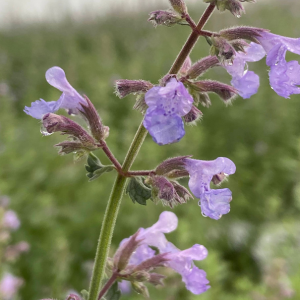
‘Cat’s Meow’ Catmint (Nepeta faassenii)
‘Cat’s Meow’ Catmint
Bees love ‘Cat’s Meow’ Catmint and so do hummingbirds and butterflies. Its dense mounded habit produces blue-purple flowers from early summer through early fall – offering pollinators a long foraging season. This fragrant catmint stands tall and strong as a landscape perennial, in borders, mass plantings and as filler in containers.
‘Cat’s Meow’ Catmint performs well in average to poor soil environments and in both alkaline and neutral soil pH. It has a medium height, topping off at 17 to 20 inches. Spread is 2 to 3 feet. This catmint resists deer and rabbits and is easy to maintain. Likes sun, in USDA Hardiness Zones 3 to 8.
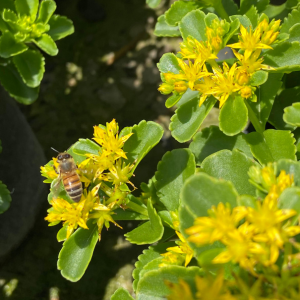
Stonecrop (Sedum kamtschaticum)
Stonecrop
Honeybees have short tongues, so they like low-growing Sedum kamtschaticum. The groundcover’s golden-yellow flower petals are small and bloom towards the end of summer, making it easy for bees to store food for the winter. There are more than 450 species of sedum – or “stonecrop” – including shrubs and tall border plants like Autumn Joy, which we also grow, as well as ornamental groundcovers. Sedum’s common name is stonecrop because it favors dry, rocky soil – making it a good selection for dry gardens and planting near rocky ledges.
This sedum is generally used as a groundcover, although it also grows well in containers. In landscape designs, use it between bluestone, cobblestone or limestone pavers when creating pathways or as an accent in otherwise hard-to-grow spaces. Sedum kamtschaticum has bright green leaves that produce flowers at their tips. As the blooms fade their seed heads turn pink and red, which extends the plant’s color into fall. This sedum is semi-evergreen, so it also provides winter interest. It spreads from rhizomes and maintains a habit of about 7 inches tall with a 10-inch spread. Drought tolerant once established, it is deer and rabbit resistant. Plant in part shade or full sun in USDA Hardiness Zones 3 to 9.
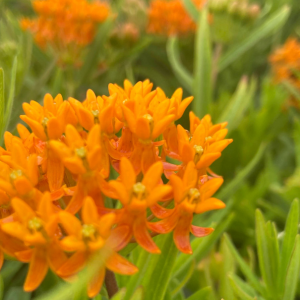
Butterfly Milkweed (Asclepias tuberosa)
Butterfly Milkweed
Bright orange butterfly milkweed is beloved among pollinators because it is a rich source of energy-producing nectar, especially for monarch butterflies. Oval-shaped leaves offer essential food for their caterpillars, which hatch on the plant. Busy bees love butterfly milkweed for its nectar too, finding it a valuable commodity in their honey production. Plant butterfly milkweed with coneflowers, Liatris, Rudbeckia and yarrow.
This milkweed blooms from June through early fall. It is drought tolerant and prefers dry soil with low moisture. Butterfly milkweed naturalizes if it’s allowed to go to seed. Control the plant population by removing seed pods before they split open. Butterfly milkweed is deer resistant and easy-care in a naturalistic landscape and pollinator garden. Mature height is 3 feet; width is 2 feet. Plant in full sun, in USDA Hardiness Zones 4 to 9.
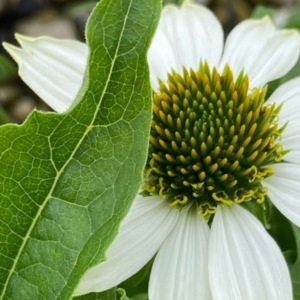
PowWow® White Coneflower (Echinacea purpurea)
PowWow® White Coneflower
Golden-yellow button centers that contrast with crisp-white petals are the bee’s knees on PowWow® White Coneflower. Centers are large, growing up to 4 inches in diameter at maturity. This provides an easy source of nectar and pollen bees love. Plus, it blooms from mid-summer to fall, offering a food source to help busy bees prepare for winter.
PowWow® White Coneflower has sturdy stems to hold up its bountiful blooms. This coneflower stands about 2 feet tall and 1 foot wide at maturity. Plant it in well-drained, fertile soil and provide consistent, deep watering until it’s established. Prune the spent blooms to encourage rebloom and cut back the foliage in fall. Apply a granular fertilizer in spring. Plant in full sun, in USDA Hardiness Zones 3 to 9.
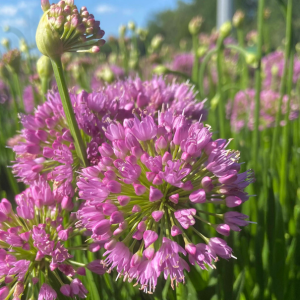
Millenium Ornamental Onion (Allium hybrid)
Millenium Allium
Hundreds of bright purple nectar-rich flowers make up each 2- to 3-inch globe cluster on the ‘Millenium’ allium. With up to eight flower clusters per plant, the pollinators will surely come calling. Bloom-time is mid to late summer. Add this fragrant allium to the middle of a perennial border with companion plants such as ‘Autumn Joy’ Sedum, PowWow® White Coneflower and ‘Cat’s Meow’ Catmint. It is a lovely selection for planting in groupings, alone and in containers.
Drought tolerant and long blooming, this allium is deer and rabbit resistant. It has a compact, upright habit with glossy-green leaves and strong, sturdy stems. Mature height in the garden is about 15 to 20 inches. Space plants about 10 to 15 inches apart. It performs well in a variety of soil conditions and has virtually no maintenance. Plant in sun to part sun, in USDA Hardiness Zones 4 to 8.
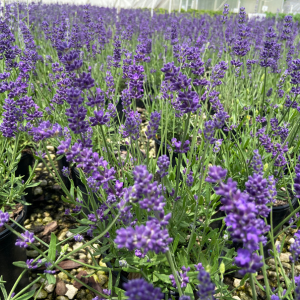
Lavender ‘SuperBlue’ (Lavandula angustifolia ‘SuperBlue’)
Lavender
We aren’t the only ones enticed by the comforting fragrance and color of lavender growing in the summer garden. Its vibrant blue-purple hue beckons bees to forage on its rich pollen and nectar, particularly in midsummer when pollinators are hard at work. Plant lavender to also attract butterflies and hummingbirds. This waterwise perennial is attractive in borders and along sidewalks and pathways. Plant lavender in the herb or kitchen garden to encourage pollination of other nearby plants.
Lavender loves sunlight and well-drained alkaline soil. Provide winter protection if lavender is planted in an island bed or open area. Water regularly and apply a slow-release fertilizer in spring. Lavender has a mature height of 12 to 20 inches and width of 24 inches. Plant in full sun, in USDA Hardiness Zones 4-9.
Learn About the Loma Vista Nursery Family and Our Landscape Plants
Loma Vista Nursery’s staff members are experts in the field. We love helping people learn and understand more about plants. Visit our plant catalog for information about shrubs, trees and perennial plants that are ideal for Midwest landscapes. To get answers to plant-related questions, send an email to sales@lomavistanursery.com or call (785) 229-7200.
Connect With Us
Stay current on our plant recommendations, growing tips and more by following us on social media.
